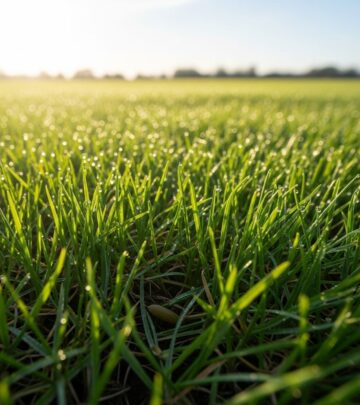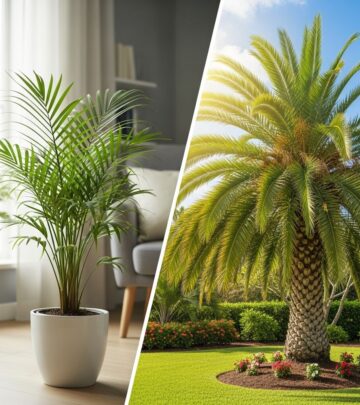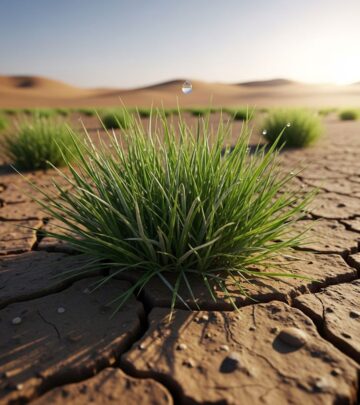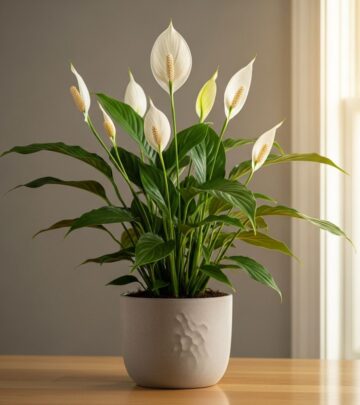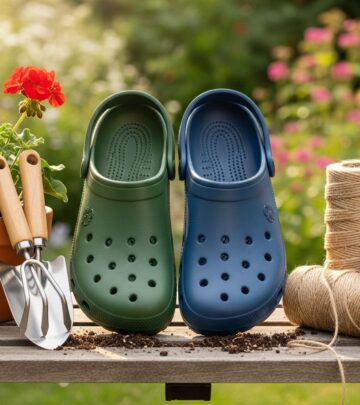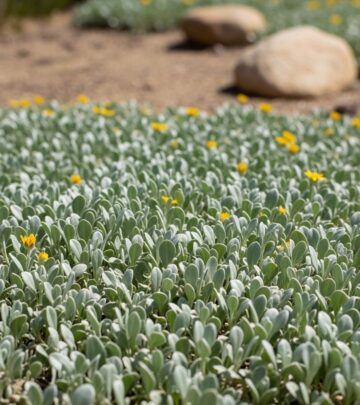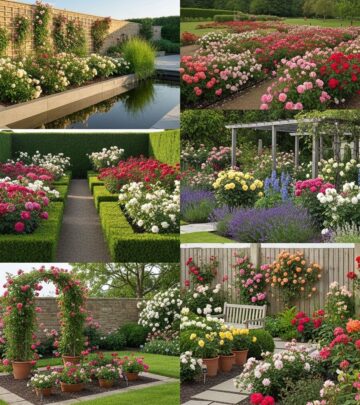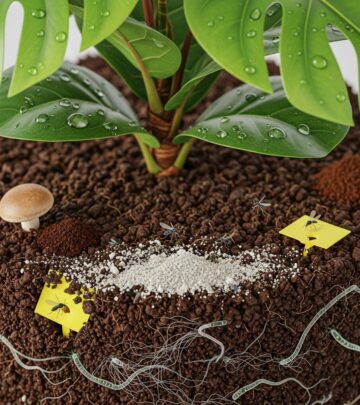Best Garden Tools For Beginners: 12 Essential Tools
Equip yourself with must-have gear to transform your outdoor space into a lush haven.
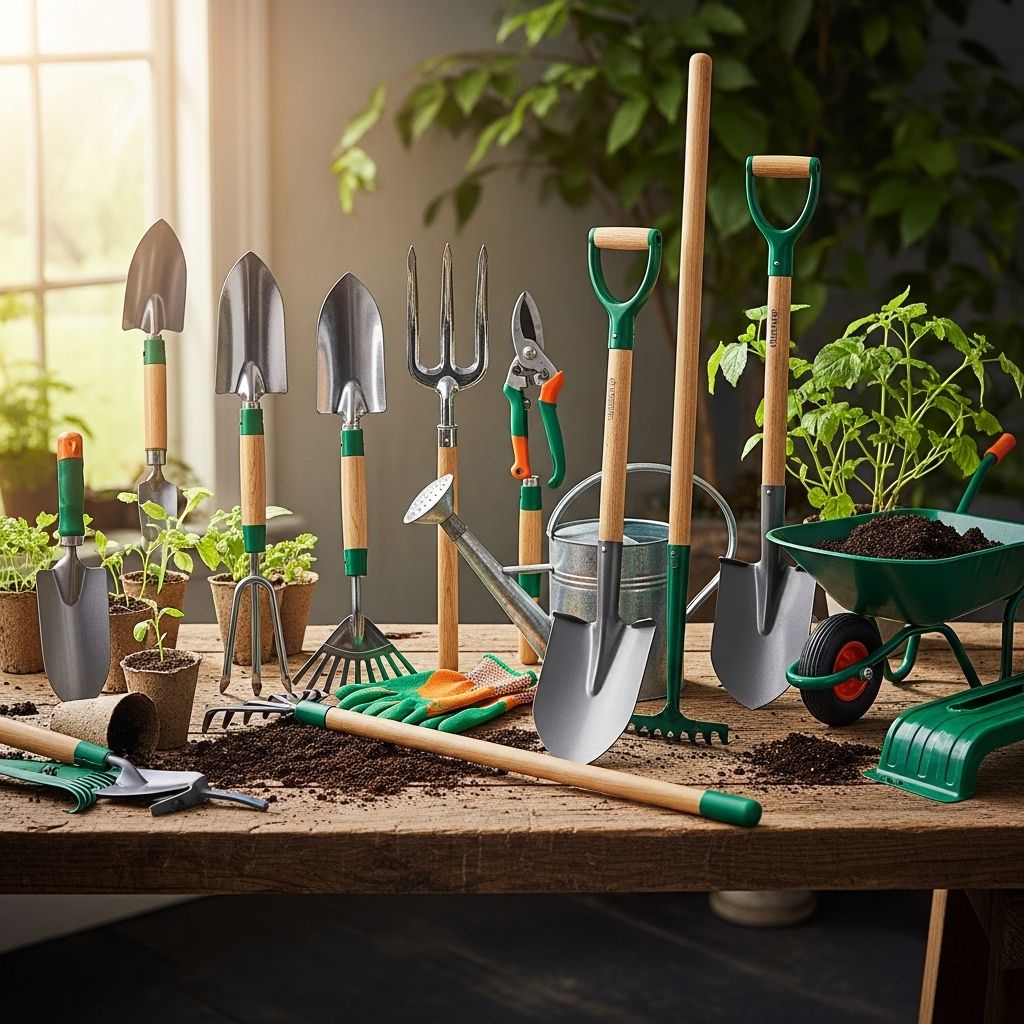
Image: HearthJunction Design Team
12 Essential Garden Tools for the Beginner
If you are just starting your journey into gardening, having the right tools is the first step toward success. The following guide highlights twelve indispensable tools every beginner gardener should have in their shed, explaining their uses, what to look for when purchasing, and offering expert recommendations to help you build your starter toolkit. Understanding each tool’s function will not only make your tasks easier but will also contribute to a healthier, more beautiful garden.
Table of Contents
- 1. Gloves
- 2. Pruning Shears (Secateurs)
- 3. Loppers
- 4. Garden Fork
- 5. Hand Trowel
- 6. Spade
- 7. Hoe
- 8. Garden Hose with Adjustable Nozzle
- 9. Watering Wand or Can
- 10. Wheelbarrow
- 11. Garden Rake
- 12. Garden Knife (Hori Hori)
1. Gloves
Purpose: Protect your hands from thorns, splinters, blisters, and soil-borne bacteria.
- Choose gloves that fit well: Snug enough for dexterity but not too tight.
- Look for durable fabric, reinforced fingertips, and breathable material.
- Longer cuffs offer added protection for wrists and forearms, especially when handling thorny plants or digging.
Tip: Wash gloves regularly to prevent the buildup of mildew and bacteria. Store them in a dry place to extend their lifespan.
2. Pruning Shears (Secateurs)
Purpose: Trim or shape plants, cut back perennials, and harvest herbs or flowers.
- Bypass pruners are ideal for live plants and green wood; anvil pruners are better for dead wood.
- Choose a model that fits comfortably in your hand, with a locking mechanism for safety.
- High-quality steel blades hold their edge longer and are easier to sharpen.
Maintenance: Clean sap and debris from blades after use and oil joints regularly for smooth operation.
3. Loppers
Purpose: Cut thicker branches—up to 2 inches in diameter—with ease.
- Loppers are essentially long-handled pruners, allowing for more leverage and reach.
- Bypass and anvil types are available; bypass is preferred for live branches.
- Consider lightweight aluminum or fiberglass handles for easier handling.
Tip: Check for cushioned grips to reduce hand fatigue during extended use.
4. Garden Fork
Purpose: Turn soil, break up compacted earth, and incorporate organic matter.
- Forks with a slight curve are suited for scooping mulch or flipping compost piles (like a pitchfork).
- Straight tines are the best for digging into tough, rocky, or clay soil.
- Square tines are generally stronger than flat ones, which can bend when hitting roots or rocks.
| Type | Best For |
|---|---|
| Slight curve | Mulching, composting |
| Straight tines | Digging, rocky or clay soil |
| Square tines | Strength, heavy-duty digging |
Expert Recommendation: The Radius Garden 203 Pro Ergonomic Steel Digging Fork has rust-resistant stainless steel square tines and an ergonomic, non-slip handle for comfort.
5. Hand Trowel
Purpose: Transplant bedding plants and herbs, plant containers, or remove weeds.
- Broad blades are better for moving more soil; long, narrow blades are suited for digging up weeds or working in rocky soil.
- Handles should be ergonomic and comfortable for long periods of use.
- Look for trowels forged from stainless steel or with stainless steel heads for durability and rust resistance.
Expert Recommendation: The Garrett Wade Tulip Trowel features sharp blades adept at cutting through stubborn roots, making it perfect for planting bulbs or around trees.
6. Spade
Purpose: Dig holes for planting, edge garden beds, or move small amounts of soil and compost.
- A good spade has a flat, squared-off blade for slicing through soil, sod, and roots.
- Choose a spade with a comfortable, robust handle—traditional wood or modern fiberglass options are both suitable.
- Look for treads at the top of the blade to prevent foot fatigue.
Tip: Stainless steel blades resist rust and are easier to clean.
7. Hoe
Purpose: Remove weeds, shape soil, and prepare garden beds for planting.
- Draw hoes are well-suited for weeding and cultivating garden beds.
- Flat hoes (like stirrup or oscillating hoes) are ideal for slicing weeds just below the surface.
- Handle length should allow you to work comfortably from a standing position, reducing back strain.
Maintenance: Clean the blade after each use and sharpen as needed for optimum performance.
8. Garden Hose with Adjustable Nozzle
Purpose: Watering garden beds, containers, and lawns efficiently.
- Choose a hose length suited to your garden size to avoid constant repositioning.
- Look for rubber hoses, which are more durable and less prone to kinking than vinyl varieties.
- An adjustable nozzle permits varying spray patterns, from mist to powerful stream, catering to different watering needs.
Tip: Attach a quick-connect fitting for easy changes between watering tools and accessories.
9. Watering Wand or Can
Purpose: Deliver a gentle shower to delicate seedlings, hanging baskets, and hard-to-reach plants.
- Watering wands extend your reach and offer precise control over water flow.
- Look for models with ergonomic handles and flow control valves for comfort and ease of use.
- Watering cans should have a removable rose (the perforated spout) for gentle or more forceful watering.
Tip: Select a watering can size that balances water capacity with manageable weight when full.
10. Wheelbarrow
Purpose: Transport soil, compost, mulch, plants, and garden debris efficiently.
- Single-wheel designs offer maneuverability for tight spaces, while dual-wheel models provide greater stability.
- Polymer trays are lightweight and resistant to rust, while steel trays are sturdier for heavy-duty jobs.
- Opt for comfort-grip handles to reduce hand and wrist strain during big projects.
Maintenance: Store your wheelbarrow under cover to prevent rust and prolong its lifespan.
11. Garden Rake
Purpose: Level soil, remove debris, and gather leaves or grass clippings.
- Bow rakes (with short, rigid tines) are ideal for soil work and garden bed preparation.
- Leaf rakes (with long, flexible tines) are best for collecting leaves and light debris.
- Look for sturdy materials and a comfortable handle, typically between 48″- 60″ in length, to match your height.
Tip: Regularly clean and hang your rake to prevent bending or breaking of tines.
12. Garden Knife (Hori Hori)
Purpose: Multi-use tool for digging, cutting, dividing plants, and even measuring planting depth.
- Hori Hori knives combine a sharp edge, serrated edge, and depth markings for maximum versatility.
- Choose stainless steel blades for rust resistance and longevity.
- Look for a comfortable, sturdy handle and a protective sheath for safe storage.
Tip: This tool can double as a weeder, trowel, and even a small saw for light root pruning.
Bonus: Tool Maintenance Tips
Taking good care of your tools ensures they last longer and perform better. Here are essential maintenance tips:
- Clean soil and debris off tools after each use with water and a brush.
- Dry tools thoroughly to prevent rust; apply a light coat of oil on metal parts before storage.
- Sharpen cutting tools regularly to maintain clean cuts, which are healthier for plants.
- Store tools in a dry, sheltered location—preferably hung up to prevent damage or injury.
Expert Recommendations
- Radius Garden 203 Pro Ergonomic Steel Digging Fork: Rust-resistant, ergonomic handle, and ideal for heavy soil tasks.
- Garrett Wade Tulip Trowel: Sharp, durable, and excellent for both planting and weeding in tight spaces.
Choosing well-made, comfortable tools is an investment in your gardening enjoyment and productivity. Don’t hesitate to try a tool in-store, if possible, to make sure it feels right in your hand.
Frequently Asked Questions (FAQs)
Q: What are the first tools a beginner gardener should purchase?
A: Start with gloves, a hand trowel, a spade, pruning shears, and a garden fork. These basics cover most early gardening needs and can be built upon as you gain experience.
Q: How do I maintain my garden tools?
A: Always clean tools after use, dry thoroughly, and store in a dry place. Apply oil to metal parts to prevent rust, and sharpen blades routinely to keep them effective.
Q: Are expensive tools always better?
A: Not necessarily. While higher-priced tools often use better materials and ergonomic designs, some mid-range tools offer excellent value and durability. The key is to select for comfort and purpose, not just price.
Q: How can I store garden tools to extend their life?
A: Hang tools up or keep them in a dedicated shed. Avoid storing tools in damp places, and use protective sheaths or hangers for sharp tools to prevent accidents and dulling.
Conclusion
Beginning your journey in gardening is exciting and rewarding, especially when equipped with the right set of tools. By choosing durable, comfortable, and purpose-driven tools—and maintaining them well—you’ll set yourself up for years of productive and enjoyable gardening. As your skills and needs grow, you can add to your collection, but these twelve essentials form the foundation for any successful garden adventure.
References
- https://northerngardener.org/canva-garden-design/
- https://www.gardeners.com/how-to/garden-planner/garden-planner-home.html
- https://www.growveg.com/garden-planner-intro.aspx
- https://littleterracedhouse.com/2021/04/22/a-beginners-guide-to-designing-a-garden/
- https://www.gardendesign.com/how-to/tools.html
Read full bio of medha deb



